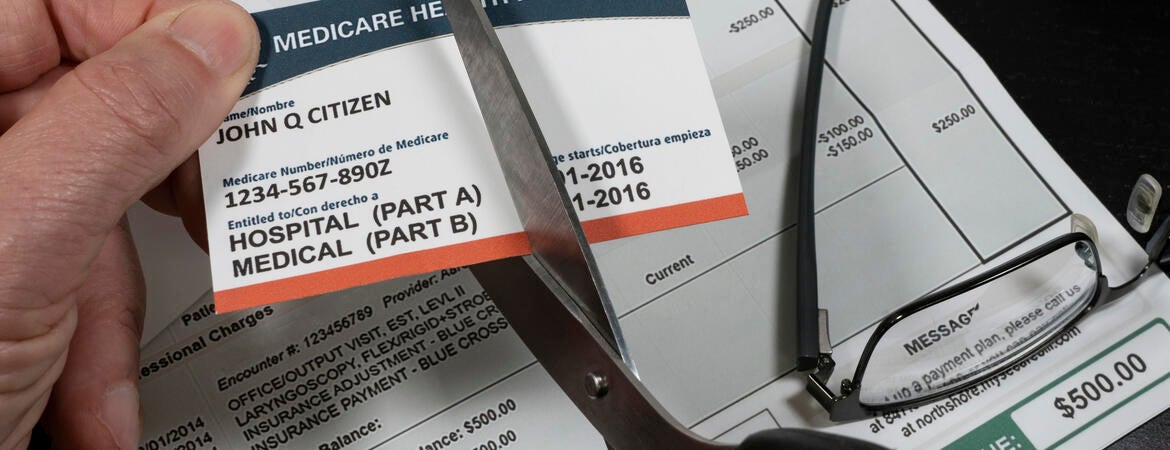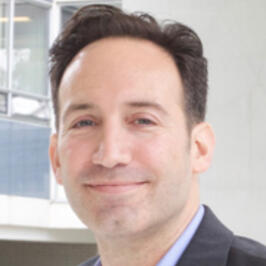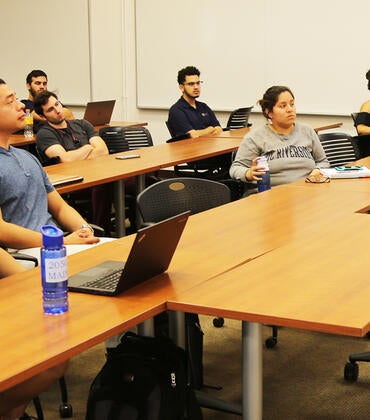
Proposed reductions to Medicaid and Medicare are currently being debated, with some plans calling for more than $880 billion in federal Medicaid funding cuts. Medicare is primarily for those 65 and older, while Medicaid is for low-income individuals and families. The reductions could result in millions losing coverage and benefits, as well as facing lower-quality care — especially among low-income adults who are also Medicare beneficiaries.
Experts at the University of California, Riverside, weigh in on what impact these cuts could have. Bruce Link is a distinguished professor of public policy and sociology; Richard Carpiano is a professor of public policy; and Sanya Dhama is a first-year medical student.
Q: What are the potential consequences of the proposed Medicaid cuts in the omnibus bill, and what does past research on Medicaid expansion suggest about the likely impacts?
Link: Estimates of the number of people who will lose Medicaid coverage based on the omnibus bill currently before Congress put the figure at 8.6 million according to the Government Accounting Office and 10.3 million according to the Kaiser Family Foundation. Significant harm is likely to ensue, particularly for the low-income people who are covered by Medicaid.
One way to gauge the consequences of such a reduction is to consider the benefits of increased levels of insurance that came with the expansion of Medicaid associated with the Affordable Care Act. Following a 2012 Supreme Court ruling, it became possible for states to choose whether or not to adopt Medicaid expansion, with some choosing to adopt the expansion as soon as they could, whereas others adopted later or not at all. This circumstance allowed relatively rigorous tests of the consequences of adopting the policy on a host of outcomes. The research provided a strong signal in its documentation of benefits for access to care, cardiovascular conditions, perinatal care, maternal health, and access to lifesaving screening. Outside the health domain, there is also evidence that Medicaid expansion reduced exposure of low-income people to significant financial hardship. Taking insurance access away will take away these demonstrated benefits.
Q: How do personal experiences and ethical considerations shape the argument against large-scale cuts to Medicaid access?
Link: Moving from the general to the particular, I lost a nephew to colon cancer that could have been cured if the screening guidelines at the time included 47-year-olds (they now do). Uninsured people are substantially less likely to receive life-saving screenings such as colonoscopy, and it is easy for me to imagine a person much like my nephew not getting it when needed. Personalized in that way, and then generalizing across all the circumstances that access to Medicaid has been shown to affect, it seems to me that removing so many people from the rolls is unconscionable. As we face these consequential policy decisions, we need to step back and ask, ‘What do we owe one another?’ If we do that it is hard to imagine following through on such large and consequential cuts to Medicaid access.
Q: How do proposed cuts to Medicare align with current trends in healthcare costs, population aging, and chronic disease prevalence?
Carpiano: Medicare is a vital federal program covering the health care of most older Americans regardless of income or existing health conditions. It covers a wide range of services, including doctor’s visits, preventive care, hospitalization, and nursing care. Thus, significant cuts to the program would have immediate consequences for the extent and quality of services it covers for the roughly 67 million Americans who rely on it. This is a population that, due to their life stage and the prevalence of chronic diseases that occur at older ages, requires more medical care than younger age groups. Also, there has been a rising trend in Medicare recipients (more than half) signing up for Medicare Advantage plans offered by private insurers. These insurers receive federal funding to provide Medicare services and often offer enrollees other services as part of the plan. Potential funding cuts to Medicare could mean these insurers receive less money from offering such plans and limit the extent of services provided, increase co-pays that enrollees have to pay for their services, or, worse, limit enrollment eligibility, which could present health care service gaps in some areas of the country.
For as bad as cuts could be right now, they could create future problems in two ways. First, the Medicare-eligible population will be increasing in size in the coming years, meaning more people will be depending on the program for their health care needs. Second, in terms of health care costs, annual health care spending per person will increase, though the annual rate of that growth will vary.
Further adding to such impacts are the Trump administration’s major cuts to biomedical research funding, which offers a high return on investment for discovering new ways to reduce disease risk; and public health services, which are essential to promoting health and preventing major diseases many Americans are at risk for. These funding cuts will only serve to make more older adults unhealthy and thus more costly for Medicare to insure in the years ahead.
Q: How does Medicaid play a crucial role in providing access to care for youth and adults who otherwise couldn’t afford it?
Dhama: Medicaid is a lifeline for millions of people who would otherwise go without care, from children, pregnant people, low-income adults, seniors, to individuals with disabilities. It covers nearly four in ten children nationwide and over eight in ten living in poverty, providing necessary physical and mental health services. In Riverside County alone, more than one million of our community members rely on Medi-Cal, California’s Medicaid program. Proposed federal cuts of $800 billion would cut about a third of this access, reducing coverage for medications, mental health treatment, and life-saving care. Stripping these resources directly harms the health of our communities, especially those already facing systemic barriers to care.
Q: What are the long-term consequences we might see for children and families if Medicaid cuts reduce coverage for pediatric care and early intervention programs?
Dhama: From routine check-ups to life-saving vaccinations, children from birth to age 21 depend on Medicaid for comprehensive and continued care. Programs like Vaccines for Children provide free immunizations that not only empower individual children but entire communities. The recent flu-related death of a teen in Coachella Valley is a reminder of what is at stake when preventive care is out of reach, especially for conditions we know are preventable. We should be expanding these protections, not cutting them.
Medicaid cuts would also threaten Early and Periodic Screening, Diagnostic, and Treatment that ensures youth receive behavioral health screenings, early diagnoses, and school-based counseling. These services connect families to care that supports students’ well-being, learning, and long-term success. At a time when young people face a growing mental health crisis, reducing access would be both dangerous and devastating.
A cut to Medicaid is a step backward — not just in health policy, but in our shared responsibility to protect the future of children and our communities.
Header image credit: Richard Stephen, iStock/Getty Images Plus.






